
What’s it like to float down a shallow channel of stagnant water on a 6.5 foot wide 30,000 pound hunk of steel? We rented a 65 foot narrowboat for five days on the Trent and Mersey Canal from Anglo Welsh in Great Haywood near Stafford, England to find out.
What’s Hot
- No boating experience necessary
- Little to no planning/provisioning needed
- Dog Friendly
- No seasickness
- Stunning scenery
What’s Not
- No swimming
- No beach
- One star adventure level
Things to do on your Narrow Boat UK Canal Cruise
Never being more than a few feet from shore, you won’t find the private island solitude that we did in the Exumas. However, you will have the opportunity to meet some of the friendliest people, pet some of the cutest dogs, drink some of the best beers, while utilizing infrastructure that dates from the dawn of the industrial revolution. All this on [British] island time with #NoWorries.
Be a Lockmaster
Most canals traverse terrain of varying elevation. This requires the use of locks to raise and lower boats through elevation changes. This might be the most remarkable and unique feature of canal cruising.
Depending on your route, lock work can be a large part of the journey…or you can find lock free sections of the canal if you prefer. Our crew was very nervous about the locks before the trip. But after going through the first lock, our crew felt very comfortable with the process.
Throughout most of England and Whales, you must work the locks yourself to raise and lower your narrowboat through the canal network. In Scotland, locks are worked by trained professionals, and in some busy areas of England and Whales volunteers help work the locks. In a land where children are allowed to eat candy with choking hazard inside, you are also allowed to take on the inherent dangers of working a lock without supervision.
How to Work the Canal Locks


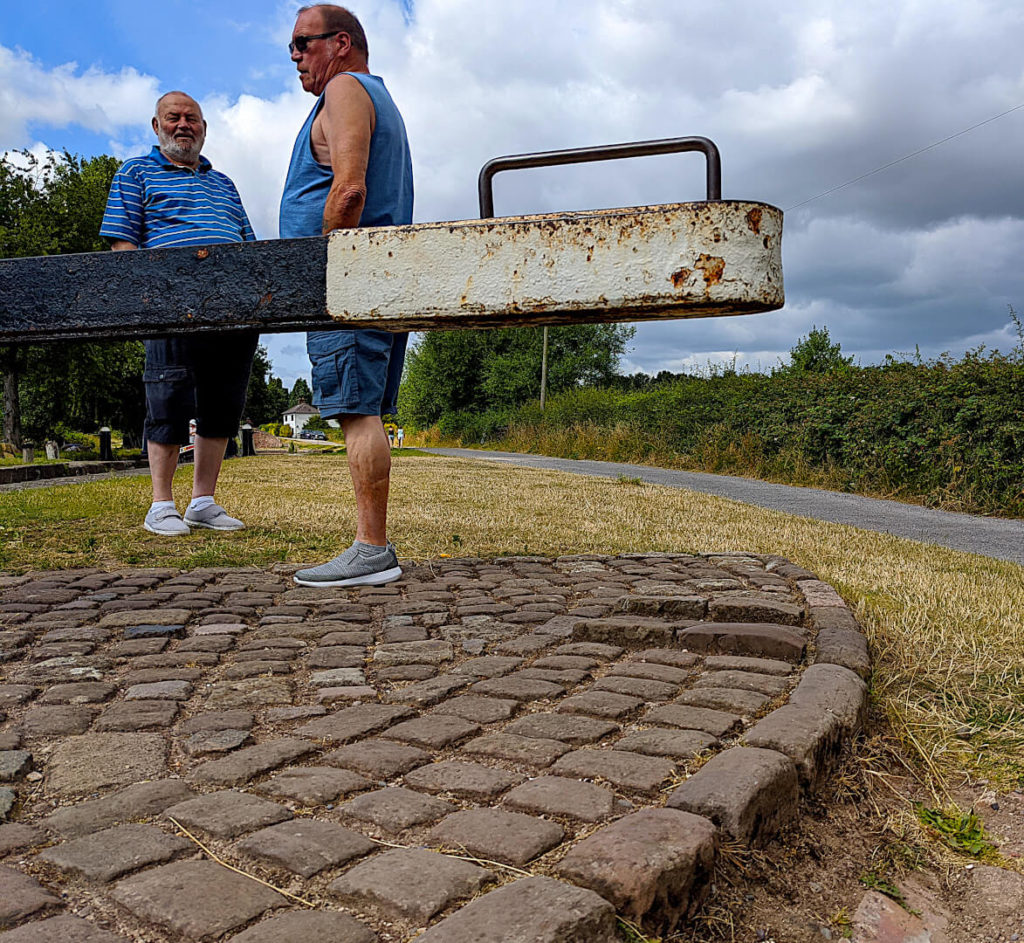

Working locks consists of cranking a ratcheted windlass to open and close floodgates to raise or lower the water inside the lock, opening and closing the lock paddles to allow the narrowboat in and out of the lock, and positioning your narrowboat safely in the lock while the water is being added or removed. Care must be taken to ensure that:
- Your boat does not get caught on the cill (a high spot at one end of the lock chamber)
- Your boat does not hit/damage the gates
- You don’t get fingers, hair, or clothes caught in the lock paddles
- You don’t let water in too quickly, which could flood the boat or crash it into the gates
- You don’t fall in
- You close the lock paddles slowly to avoid damage
- You close the lock gates and paddles before you leave, so you don’t drain the top of the canal
- You get to do all of this while people are watching from the sidelines. Some come to watch (‘gongoozelers’), some come to help, and some are waiting for their turn on the lock.
Some canals require narrowboaters to operate bridges and lifts as well. However, we did not run into any of these on our journey.
Fast is Slow and Slow is Fast
Just as turning the tiller to the left has the opposite effect on the bow (it turns the boat right), going slow is the fastest way to get somewhere on the canal.
As long as you recognize that the traversing locks is an active part of boating for the whole crew, and you don’t rush, you’ll do fine and have a good time. In fact, we heard on many occasions that the fastest way to travel on a canal is slow. Sort of like the tortoise and the hare, if you try to go to fast, you’ll mess something up. This might result in damage to your boat or canal (slowing everyone down!) or simply require time to correct.
I discovered the slow is fast mantra the heard way when we thought we had a great rhythm when passing through a series of 5 locks around Fradley Junction with no traffic. The lockmasters (George and Rachel) would run ahead while I slowed the boat without mooring so we could go straight in as soon as they had the gate open. This worked fantastically for the first four locks. In fact a couple on a bench watching the locks gave us a 9.5 rating for our performance.
Then, at the last lock while I was idling in the center of the canal instead of tying up to wait for the lock to open, the wind blew me into the mud and weeds. A very helpful fellow on the tow path let me know it was shallow over there…while thinking in my head, ‘no shit, bro’, I politely let him know I was already wrestling my way out. Once lined up perfectly with the mud you can’t point your stern in to get the bow out. You also can’t steer in reverse to exit stern first. So lots of fighting and back and forth to get free. This put a real damper in our performance and was a source for great disappointment from my lockmasters.
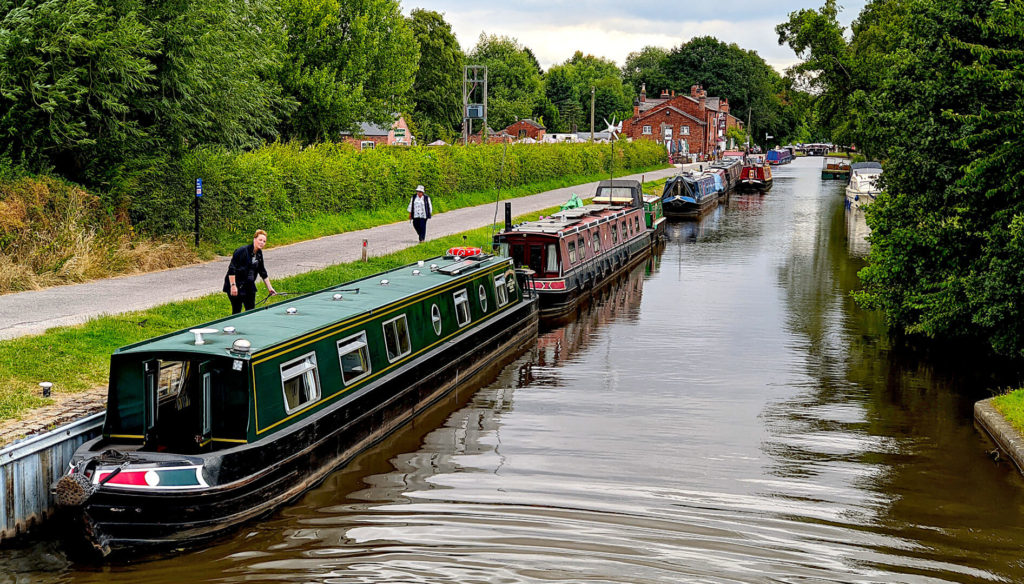
Get Your Steps In
I was surprised at how much walking we got in while cruising the canal on our narrowboat rental. Wandering up the tow paths, working the locks, and exploring the canalside towns. As the tiller operator, I still managed to average 6 miles of walking per day. My faithful lockmasters put down 9!
Imbibe at Historic British Canalside Pubs
If you’d like, you can count on stopping in a town each night. And in that town, you’ll find at least one pub. We got tired of pub food pretty quickly, but the ‘real ale‘ is the bomb dot com. The canal guides we had note which pubs served real ale (every one we came across did). The joint traditions of English pubs and real ale seem to be constantly in danger of extinction. So be sure to take time to support both on your journey. You won’t regret it.

Belly up to the bar if you’d like to meet some locals and share a drink. Drinks are surprisingly cheap in English pubs, and the patrons are surprisingly friendly to strangers. JD Wetherspoons is a chain of pubs that we found both in London and along the canals. They sold two or three beers for 5 pounds. That’s $2 to $3 per beer, including service charge (no need to tip on top of that)….Budweiser is a bit more expensive here because, you know, its imported. We even saw the bloke that was panhandling for ‘something sweet to eat’ along the towpath with his three cold ones stacked up out on the patio there. It didn’t take long to get tired of fish and chips, pie and chips, and burgers and chips (7-8 pounds for combo WITH beer AND tip!). But the real ale had me coming back for more.
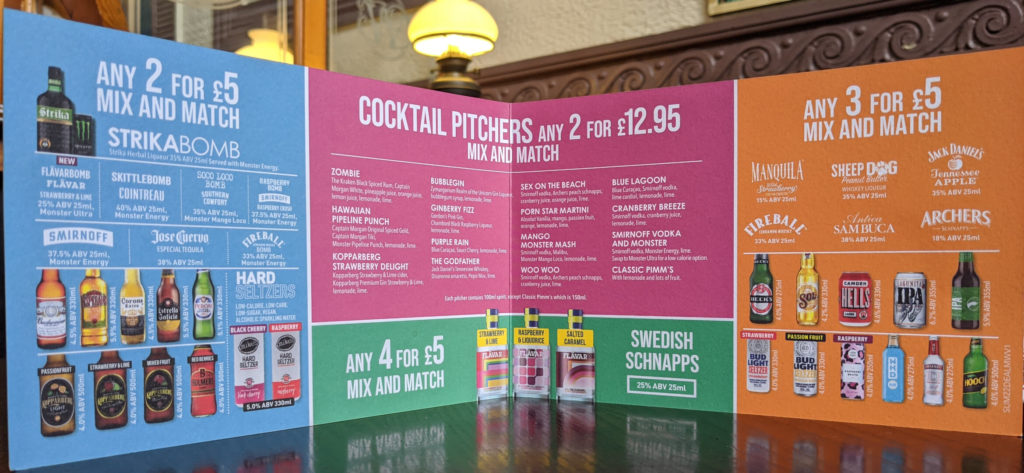
Share the Canal with Animals
Ducks and swans thrive on the British canals. They’ve learned that narrowboats can be an excellent source of food. Most narrowboats have a side hatch near the center of the boat in the galley. Once you are moored and swing that hatch open, the ducks flock right over, assuming you are open for business. Must be rabbit season because we saw lots of ducklings and ugly ducklings.


If you like dogs, you’ll love the British canals. Probably 90 percent of the boats on the canal have dogs on board. You’ll see even more being walked on the towpath. Most rental boats allow dogs. So, if your dog like to travel, this is the trip for you!
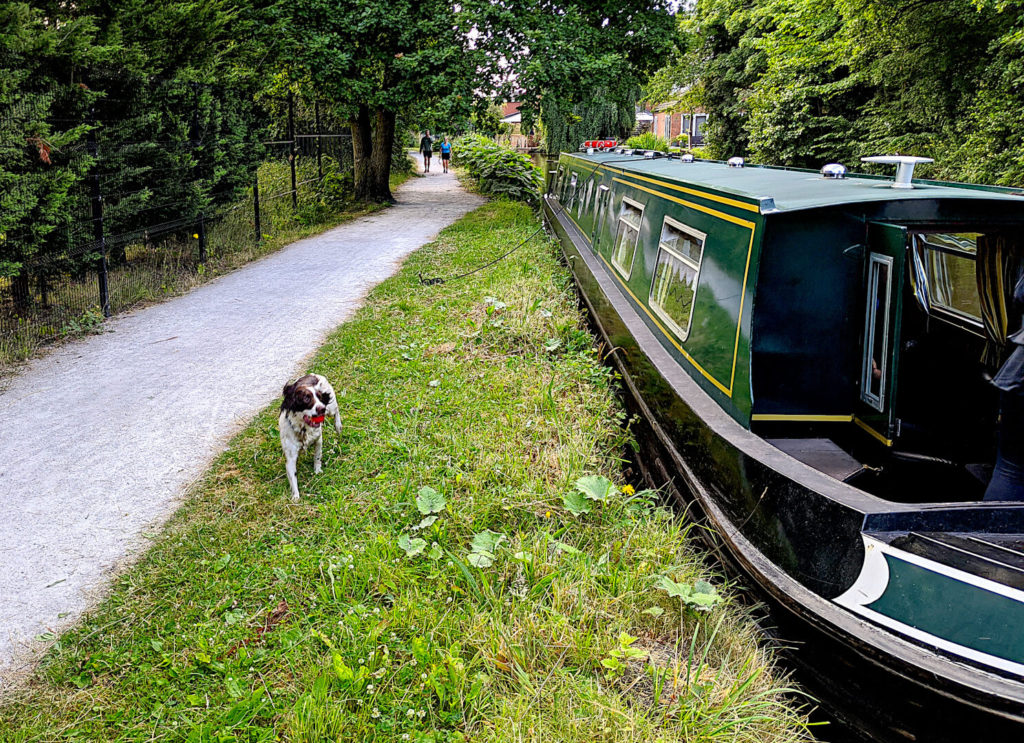
We also saw sheep, horses, and cows on pastures along the canal. They come right down to the water to drink and find shade on hot days.

Take in the Canal Scenery
Every canal offers something different. We enjoyed the beauty of the old infrastructure in the bridges, tunnels, and aqueducts that are now 250 years old. Cobblestones that have been worn smooth by the hooves of horses. We also got to enjoy the views of several historic canalside towns, lush rolling pastoral land, colorful flowers, and passenger trains speeding by.
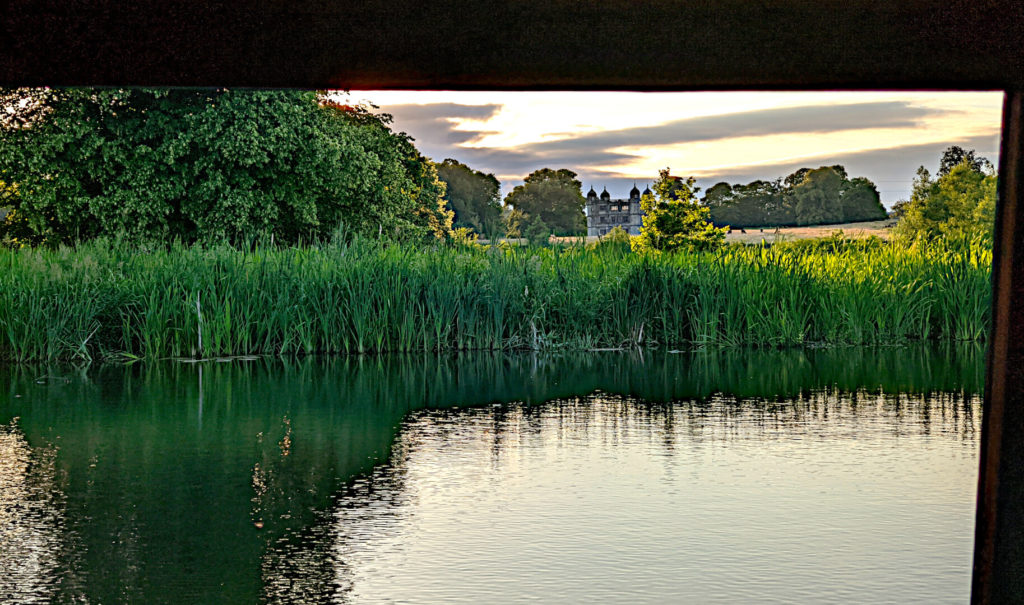

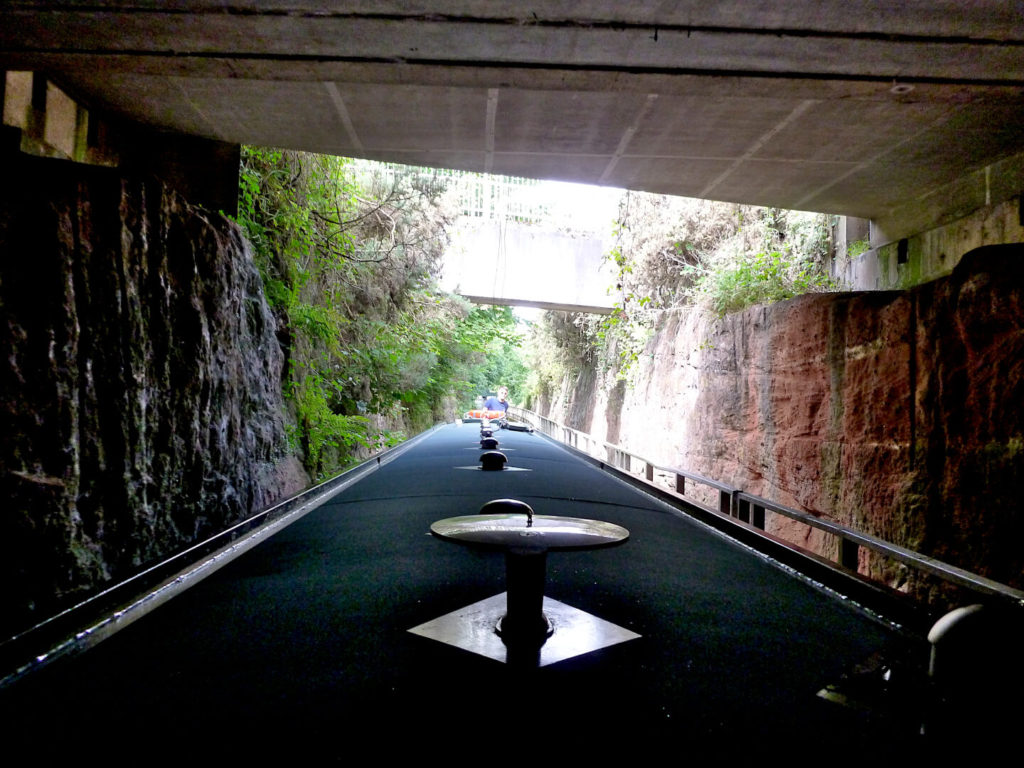

Interact with Humans
The people you run into on narrowboats and the canals are friendly and eager to strike up a conversation. The Busy Boater UK crew does not do well talking to strangers. However, we got to meet and share with many locals. They’d ask about the boat, about our trip, where we were from, and almost always wanting to confirm that we were having fun.
Go for a Paddle
There are kayaks, canoes, and paddleboards in the canal. The calm waters of the canal are a fantastic place for paddling. You can bring equipment along to go out in the canal yourself. An important note when on a narrowboat, you cannot pass paddlers on the canal, they have ultimate right of way. Fortunately, unlike in the US, the paddlers here were not assholes paddlers don’t want to be followed by narrowboats, so they will usually pull off to the side to let you pass.
Go Fishing
We came across lots of people fishing in the canal. We saw some very small fish and one very large [dead] carp along our journey. I’m not sure I’d eat any fish caught in the canal. Read on.
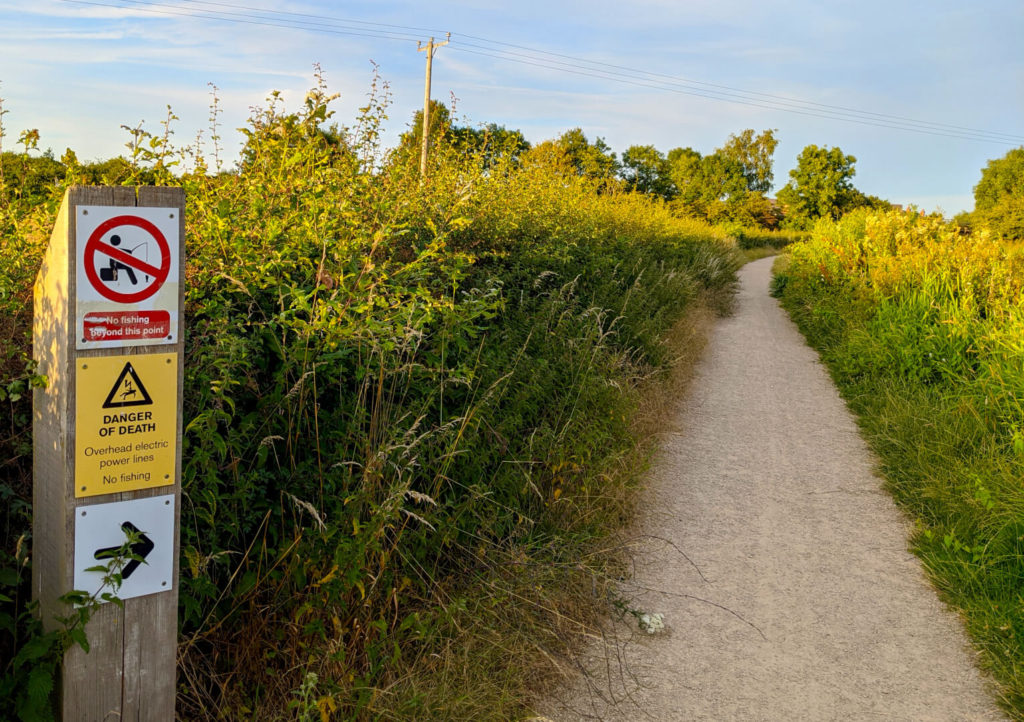
Do Not Swim in the Canals
Unfortunately, the water conditions in the canals are poor. While I haven’t seen any data, it was well understood by all along the canal that ‘everything’ is in the canal water. Combine that with the mostly stagnant state, and you can assume it is not safe to drink or swim in. Our checkout skipper instructed us to wash our hands anytime they went into the water. Additionally, the muddy bottom of the canals mean that even though they are shallow, they can be very dangerous as your legs can get stuck in the mud.
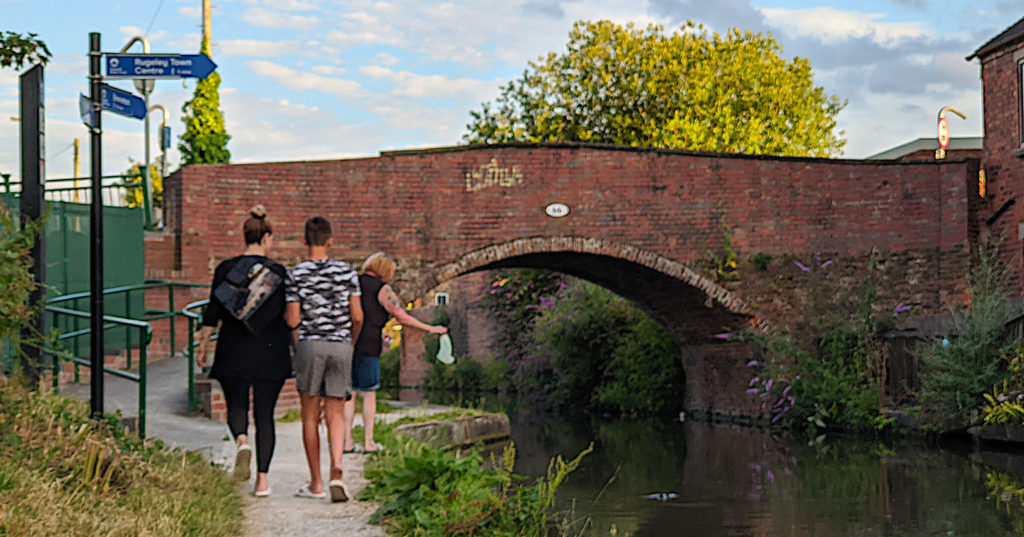
Boating Conditions on British Canals
Navigating Your Narrowboat Rental
The most important thing to note about navigating a narrowboat is that opportunities to turn around are rare and time taking. It is very easy to pass what you wanted to stop at, and almost impossible to go back up. Things came quickly and if you past them up, then you’d have to double back on foot. This is much easier than moving the narrowboat in either direction…another problem is that places for suitable mooring are not all marked on maps, and the ones that are often are occupied.
Canal Towpaths
As an engineered waterway, the canal is more intentional that it might appear at first. British canals have a towpath on one side. Prior to steam power, the towpaths were used by horses to pull barges along the canal. The towpath continues to be a critical feature of the canals. The towpath side of the canal is deeper and more deliberately maintained with a sharp, deep dropoff. So you favor the towpath side to avoid running aground. You also always stop and moor on the towpath side. The towpath also (mostly) guarantees you have a clear pathway into town or to the next lock when off the boat. In modern times, non-boaters use the paths heavily as walking paths.
Water Depth in British Canals
You do not need (won’t have) nautical charts or depth sounders to navigate British canals because they are designed to accommodate your boat. However, the canal isn’t flat: its deepest by the towpath and usually questionable on the other side. We discovered this when passing other boats: when we got too close to the shallow side, we’d get a face full of leaves, knock the GoPro off the roof, here some rocks shuffling in the prop, and stop moving. When there is vegetation growing in the canal by the towpath, there is built up silt shallowing that side too.
How Fast Can You Go in a Narrowboat?
Speaking of speed, how fast is a narrowboat? Well, you’ll spend a lot of time in ‘tickover’…translated to American, that’s idle, or the slowest speed you can go while in gear. When you are within a boat length of another boat, whether moored or moving, you must slow to tickover. You also slow to tickover when approaching limited visibility such as blind corners or tunnels. So busier canals require a slower pace, even if ‘busy’ means lots of boats moored on the side.
However, once you get out of the fray into the open waters, you can really put the hammer down and go as fast as…4 mph. Yes, 4 mph is the upper limit on the canals to prevent the boat from kicking up a wake that erodes the canal sides (ahem, I’m looking at you Venice). So if hammer down is 4mph, how fast is tickover? Our GPS clocked us at about 1.8mph in tickover.
The number of boats moored as well as traffic headed opposite you will have a significant impact on your speed because these ‘features’ require you to cut your speed by more than half.
Final Thoughts on Navigating British Canals
I discovered a lot of the hazards of navigation when passing other boats because it requires using more of the width of the canal. On our first day, while learning to use our ridiculously long, slow, hard to turn boat in one of the busiest sections of canal in the country, I equated canal boating to yachting without leaving the marina. You are going at an incredibly slow speed constantly in danger of hitting other boats and fixed objects, but without any need to consult charts, radars, depth sounders or other means to navigate beyond what you see in front of you.
Most boaters, including me, find this part of boating to be very stressful and do not look forward to it. What did I get myself into? After the first day, I realized that 1) I was taking a master class in docking that would make me more comfortable around docks in the future and 2) these boats are designed to come in contact with fixed objects so long as you are going very very slowly.
Mooring Your British Canal Narrowboat
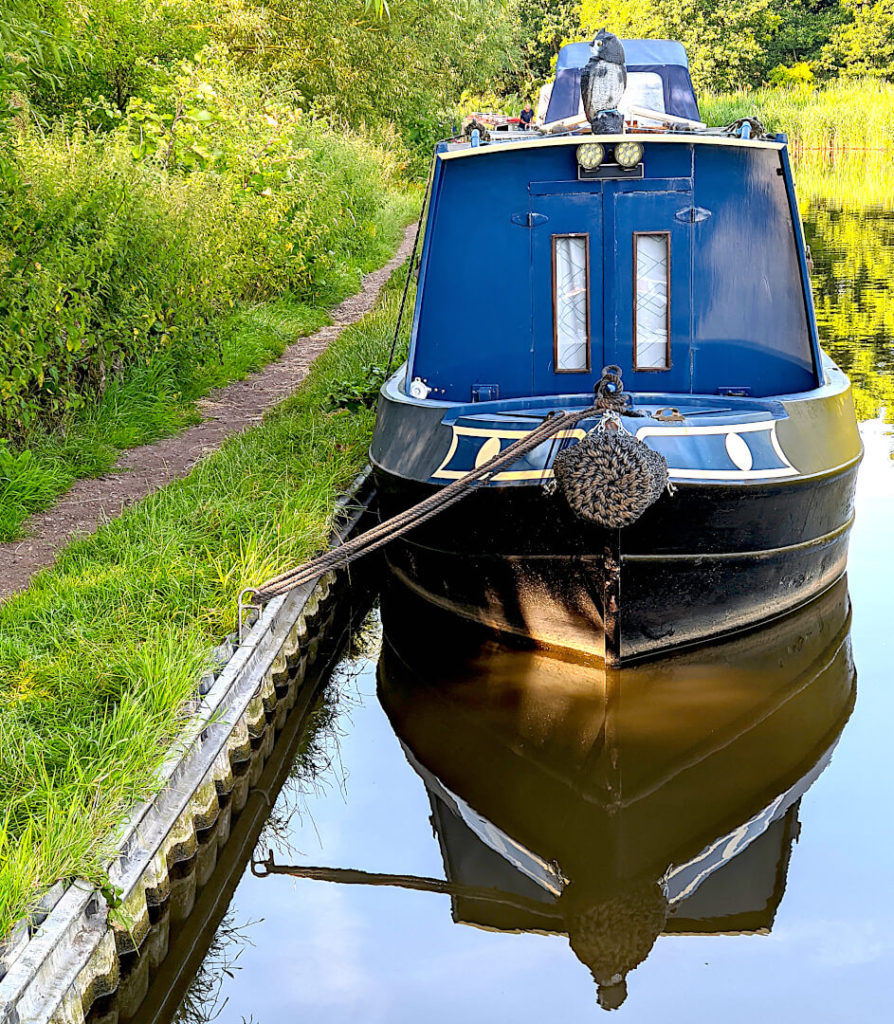
While narrowboats that intend to go on rivers have anchors for emergencies, you won’t spend the night on a buoy or anchor. Rather you tie up along the tow path using one of three methods. There are bollards to tie up to in some designated mooring areas; the Trust and the rental base will tell you that this is the preferred method. The next most common method to moor is to hammer steel pins into the ground next to the tow path to tie off to. The edge of the canals is made of gravel, so the pins go in firmly with relative ease, and then pull out incredibly easy with a shaking or twisting motion. The third option on our canal was with giant ‘nappy pins’ that could be attached to steel railing that ran along extensive lengths of the canal.
Once tied up, you put two rubber fenders out to damp the racking against the side of the canal. This is for comfort, not to protect the boat. The steel narrowboats have rub rail all around and are designed to spend some time up against other objects.
TLDR: Mooring a narrowboat is a cakewalk.
Planning
Choosing a Narrowboat Rental Base
Your rental base will dictate your cruising ground. Depending on where you pick up, you’ll have an option of may be 2-4 paths to take. You might be interested in taking your boat through a certain landmark, such as the Pontcysyllte Aqueduct. We chose the Great Haywood rental base due to its close proximity to the Avanti West Coast Trains. This made it very easy to get to from London. We also had the option of the Forth and Clyde canal in Scotland. However, we chose against the Scottish canals because they have a more recent modernization that has all of the locks operated by lock keepers: one important part of the experience for us was working the locks.
Choosing a Cruising Route
Consider whether you’ll be doing a circuitous route or an out and back route. There are many ‘rings’ that can be completed in 1-2 weeks. Shorter trips will require you to turn around half-way through your trip and retrace your steps. On a shorter ‘out and back’ trip, plan on skipping some interesting things on the way out so you have some stops to slow your pace and rest on the way back, but still have variety.
Once you know what you can take on and your rental base, you need to determine which direction to head. We used the Canal Plan web tool to estimate how much ground we could cover on our trip, then consulted the guidebooks to see what was along those canals and where we could turn around. Newsflash, you can’t turn a 65 foot narrowboat on a 20 foot wide canal! I will note two things here:
- We assumed a travel speed of 4 MPH, which was optimistic because we probably spent 25% of our time in tickover
- After agonizing over 4 different route options, we ultimately concluded on the route that our checkout skipper recommended when we picked up the boat.
So don’t be afraid to defer to the expertise of your boat rental company.
Canal Guides
Along the route, you’ll want to identify places to provision to refill your water, buy food, and turn the boat. You should purchase a guide from Pearson’s or Nicholson’s to help track your progress, anticipate upcoming hazards (locks and sharp turns) and identify canal specific resources such as winding holes (to turn the narrowboat around), water spickets, and marinas. Pearson’s was the clear Busy Boater pick: cheaper, more intuitive, and contained more canal specific details than Nicholson’s. If you ever used a AAA Triptik, Pearson’s is a cartoony canal version of that along with cryptic long winded dialogue about the canal history.
You likely won’t ever have access to power. I found the guides useless for mooring: many of the moorings identified on the guides were completely full…additionally the derelict boats in some of these areas would have you continue on regardless of space. At least where we were, it was simply a matter of heading up the canal until you found a wide spot without obstructions to the towpath; depending on the spot, it was very easy to moor with spikes or the ‘nappy pins’ when bollards weren’t available.
Weather
While some private narrowboats have wheelhouses, ‘hire boats’ leave you exposed to the elements while under way. No bimini, no pilothouse. Most boats have a radiator heating system supplied by a massive store of propane (ours held four 5-gallon tanks). Some even have a wood stove for winter. Ventilation in summer, though is poor. There’s no AC, limited window openings, and since you tie up instead of anchor, you aren’t guaranteed to point into the wind. However, depending on the canal, you can scout out a shady mooring to stay cool.
Note that the above weather issues are all about comfort. In the canal, you don’t need to consider currents, tides, or waves. There just aren’t any. The calm waters of the canals also mean your seasickness risk is roughly equivalent to taking the moving sidewalk at the airport.
Wind
I did discover that wind can be a factor that increases the challenge. Fortunately, it doesn’t tend to build up into double digit speeds the way it can on the ocean.
When facing a breeze head on, the wind will try to blow your bow off course in either direction, forcing you to constantly adjust the tiller back and forth to stay on course. If you’ve spent much time in a cheap inflatable kayak, you know what I’m talking about.
Perhaps more challenging than a breeze on the bow is a breeze from the side. On our second day, after completing 5 locks with near perfect performance, I was idling in the center of the canal like a boss instead of tying up to wait for George and Rachel to make quick work of the locks as they had run ahead from the last lock. A slight breeze started to blow and put me into the mud and weeds on the far side of the canal (opposite the tow path). A helpful fella on the top path spoke up to let me know it was shallow over there…while thinking in my head, ‘no shit, bro’, I politely let him know I was already wrestling my way out.
Once lined up perfectly with the mud you can’t point your stern in to get the bow out, and you don’t have enough steering in reverse to exit stern first, especially with the breeze. So lots of fighting and back and forth to get free. As you can imagine, this was met by my skilled lockmasters (Rachel and George) with quite a bit of frustration.
Narrowboat Rental Options on British Canals
You can get anything you want…so long as its less than 7 feet wide and 6 feet tall. With a range of options in terms of price, accessibility, and length of rental, British narrowboat rentals check a lot of Busyboater boxes.
Multi-Day Rental
Most narrowboat rental companies seem to operate on schedules. They’ll offer weeklong rentals that depart on certain days and short breaks for specific number of days, again departing on fixed days. So you can’t necessarily dictate the exact dates of your rental.
Dayboat Rental
Many narrowboat companies have smaller dayboats that will give you the opportunity to explore the canal for a few hours. Anglo Welsh had two dayboats at our base and we saw parties going out to celebrate birthdays.
When To Go
The canals are open year round, except when closed for maintenance. If you don’t mind weathering some cold and rain, you’ll find quieter canals in the winter than Summer. Like most recreational activities, you’ll also find it busier on the weekends and school holidays. If you’ll be traveling with kids, check your school calendar against the local schools where you plan to rent to see if there are some gaps between the two.
Getting to your Narrowboat Rental on the British Canals
The British canal system extends through most of the British Isles, including Whales and Scotland. So, there are many choices as to where to pick up your narrowboat. Many of the rental bases are in the countryside and will require a good drive or long train ride from London. We chartered from the Great Haywood base near Stafford because it is served by frequent, fast trains from London. While Uber has been #cancelled in London and very spotty in the English countryside, there was no wait at the taxi line at the train station. The ride to the base was 14 pounds. Be sure to get your taxi driver’s number for a pickup, because it can be challenging to get picked up in the smaller towns. Depending on the base you are headed too, the most challenging part of the journey (for Americans) will be the flight to the UK.
